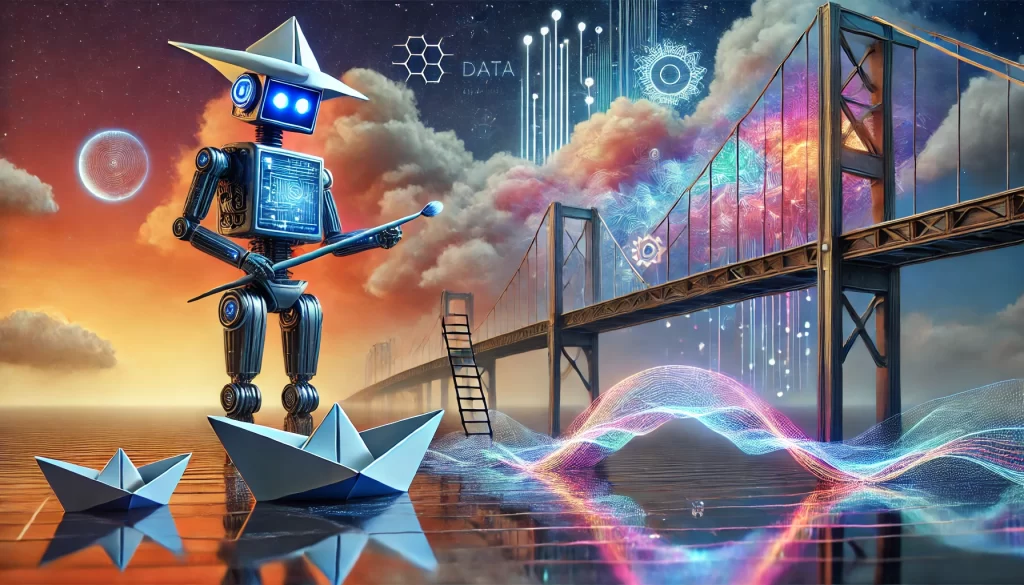When people think about data, they often picture endless rows of numbers, complex spreadsheets, and dense charts. But to me, data is more than just numbers—it’s a story waiting to be told. As someone fluent in programming languages like Python, R, and Scala, and experienced with data manipulation libraries like pandas and NumPy, I’ve spent countless hours wrangling raw data into meaningful insights. But the true magic doesn’t just happen in the code. It happens when creativity breathes life into those insights, turning patterns into narratives that resonate.
I’ve always believed that data is the foundation of understanding, but creativity is what builds the bridge to action. It’s easy to get lost in the technical aspects—optimizing algorithms, scaling systems, and deploying machine learning models. With tools like Hadoop and Spark, I’ve tackled massive datasets and built pipelines that sift through terabytes of information. I’ve harnessed the cloud—AWS, Azure, and GCP—to process and analyze data at unprecedented speeds. These tools are powerful, but without a creative approach, they can feel mechanical and disconnected.
Patterns and Predictions: How Data Inspires Ideas
Data, at its core, reveals patterns. It shows us trends, anomalies, and relationships that might otherwise go unnoticed. For instance, using Python’s machine learning frameworks, I’ve built predictive models that forecast customer behavior and identify emerging market opportunities. But what sets impactful data work apart isn’t just identifying trends; it’s weaving those trends into stories people understand.
Imagine finding a pattern where a particular customer segment interacts with a product differently than expected. That’s not just a statistical anomaly—it’s a window into human behavior. What drives that behavior? What emotions are at play? These are the questions that data sparks, and creativity helps answer.
Creativity as the Translator
Once the patterns are clear, creativity steps in as the translator. Numbers on their own don’t inspire action, but stories do. My approach has always been to pair data-driven insights with compelling narratives. For example, when working with big data technologies like Spark, I developed customer segmentation models that revealed underserved markets. Instead of presenting this as a dry analysis, I framed it as an opportunity to build products that speak directly to these audiences’ needs—highlighting their struggles and aspirations.
Whether designing marketing campaigns, optimizing business processes, or launching new products, I’ve learned that storytelling drives engagement. A creative approach can make even the most complex data accessible. When pitching ideas to stakeholders, I often use visualizations and analogies to bring concepts to life. Tools like Tableau and Matplotlib help turn raw data into visual stories, making patterns immediately clear.
From Insight to Impact
Data alone won’t change minds or drive decisions. It’s the context and connections we create that make the difference. I’ve found that pairing predictive modeling with customer personas creates relatable stories. For example, when analyzing eCommerce data, I once identified an untapped niche of environmentally conscious buyers. Rather than presenting numbers and charts, I painted a picture of a fictional character—Sarah, a 30-something millennial who wants to make eco-friendly choices but struggles to find products that align with her values. By focusing on Sarah’s journey, I turned the analysis into a narrative that stakeholders could rally behind.
The Technical Meets the Imaginative
The beauty of combining data with creativity is that it allows us to humanize the analytical process. My experience with cloud platforms like AWS and Azure has shown me the power of scalability, but it’s my creative approach that has enabled me to leverage that power effectively. For example, automating machine learning pipelines to detect sentiment in customer reviews is a technical achievement. But interpreting that sentiment to improve marketing messages or product designs requires a creative mindset.
Beyond my work in data and programming, creativity has always been a cornerstone of who I am. I’ve published 10 books, exploring humor, storytelling, and satire that reflect real-life experiences. Additionally, I’m a skilled oil painter and pen-and-ink sketch artist, which has given me a unique ability to visualize abstract concepts and transform them into compelling narratives. My work has even earned a storytelling award, further validating my belief in the power of blending art and science.
This combination of skills—technical expertise and creative thinking—has shaped my career and allowed me to bridge gaps between data scientists, marketers, and decision-makers. It’s not enough to be proficient in Python, R, or Scala. What matters is how you use those tools to create insights that inspire action.
Academic Foundations and Creative Mastery
My academic journey has also played a crucial role in shaping my analytical mindset and creative approach. I hold a PhD in Earth and Environmental Science—a highly complex and data-driven field—where I honed my skills in research methodologies, statistical analysis, and data modeling. This rigorous scientific training equipped me with the tools to dive deep into patterns, interpret findings, and draw meaningful conclusions. Additionally, my bachelor’s degree in Psychology has provided me with insights into human behavior and decision-making processes, further enhancing my ability to craft narratives that resonate.
This educational foundation, paired with years of hands-on experience, has allowed me to seamlessly blend scientific precision with artistic expression, turning raw data into impactful stories.
The Story in the Numbers
In the end, data is a tool, and creativity is the artist. Together, they tell stories that drive change. My work has always been about finding those stories—whether through machine learning algorithms, cloud-based data pipelines, or visualizations—and bringing them to life in ways that connect with audiences. What stories can you uncover in your own data, and how might creativity help you turn those insights into impactful narratives?
So the next time you see a spreadsheet or a line of code, remember: buried within it is a narrative waiting to unfold. And with the right combination of technical skill and creative vision, that story can move mountains.

